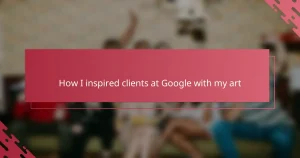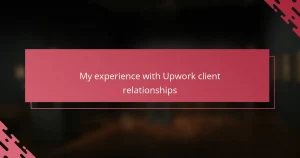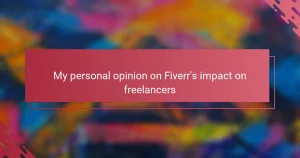Key takeaways
- An illustrator portfolio tells a brand’s story visually, fostering connections and emotional bonds with the community.
- Key elements of effective illustrations include capturing the essence of the brand, maintaining consistency, and ensuring relevance to local culture.
- Building strong client relationships relies on genuine communication, transparency in the creative process, and showing appreciation post-project.
- Illustration can revitalize local businesses by making their visual identity authentic and relatable, enhancing their connection with customers.
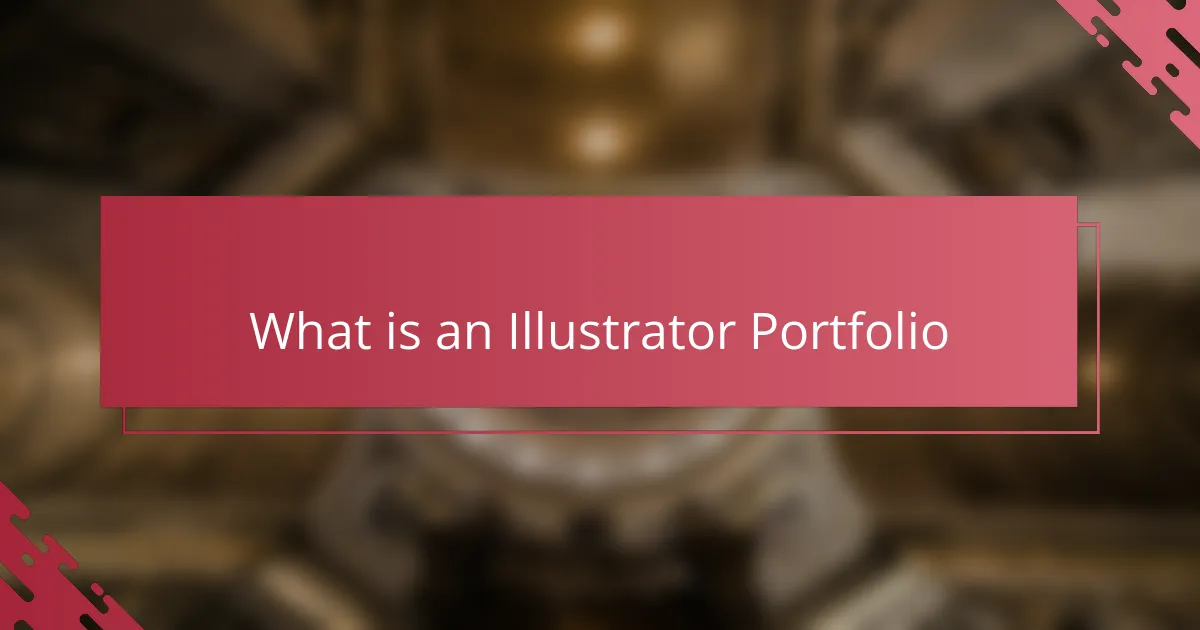
What is an Illustrator Portfolio
An illustrator portfolio is more than just a collection of images—it’s a window into my creative world. It showcases the range and depth of my skills, capturing the unique style that defines my work. Have you ever flipped through sketches and felt a genuine connection to the artist’s vision? That’s the kind of experience a well-crafted portfolio aims to create.
For me, each portfolio becomes a story. It’s a carefully curated journey that not only highlights finished pieces but also reflects the process behind them. When I compile my work, I think about how each illustration communicates something personal, inviting viewers to understand the brand’s message through art.
Building an illustrator portfolio also means tailoring my presentation to reflect the needs of local businesses. This approach transforms random images into a targeted narrative that helps brands connect with their community. Isn’t it fascinating how a single drawing can embody a whole business’s identity?
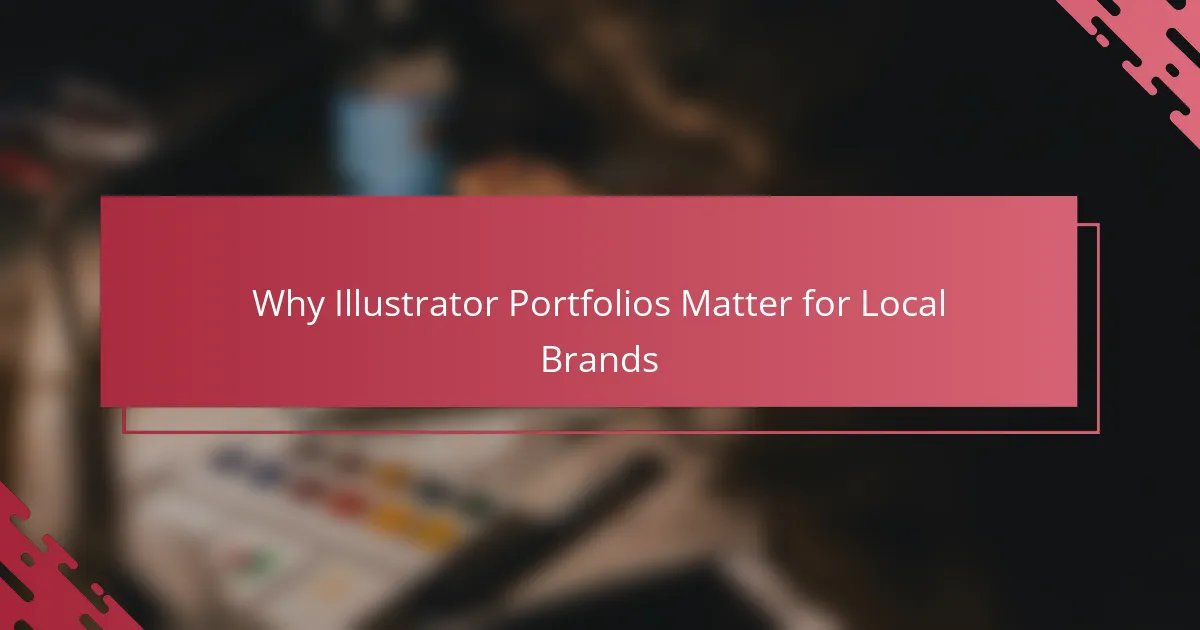
Why Illustrator Portfolios Matter for Local Brands
When I think about why illustrator portfolios truly matter for local brands, it’s clear to me that they do more than just showcase art—they tell a brand’s story in a way that words alone can’t. Have you ever noticed how a well-chosen image sticks with you longer than a slogan? That visual connection builds trust and familiarity within a community, and I’ve seen firsthand how it sparks loyalty.
Local businesses often have rich, authentic stories waiting to be told, but they don’t always have the tools to share them effectively. That’s where a thoughtfully crafted portfolio becomes a bridge, turning abstract ideas into vivid illustrations that resonate emotionally. I remember working with a small café whose quirky charm was captured perfectly through my sketches, and watching their customers respond with real enthusiasm felt incredibly rewarding.
It also makes me wonder—how else can a brand stand out in a crowded local market without a visual identity that feels genuine? In my experience, portfolios provide that unique edge by reflecting the personality behind the products and services, making the brand memorable and approachable. This isn’t just design; it’s about fostering a relationship between a business and its neighbors.
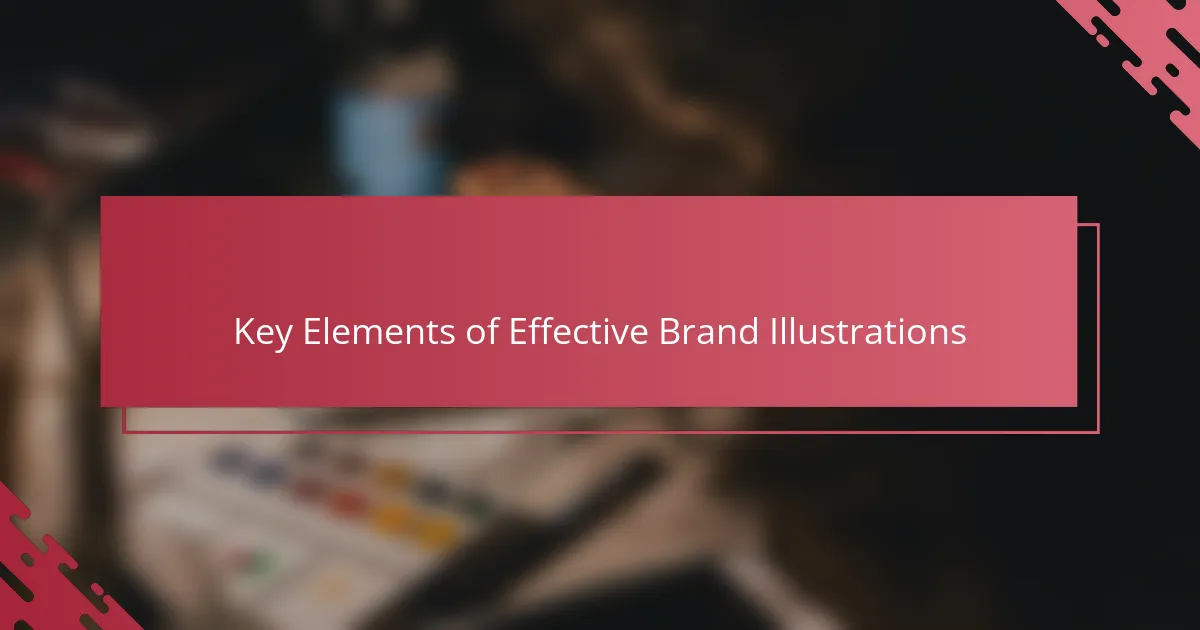
Key Elements of Effective Brand Illustrations
What makes brand illustrations truly effective? From my experience, it starts with capturing the essence of the business in a single image. When I sit down to create, I ask myself: does this illustration speak to the heart of the brand and the people it serves? That focus helps the artwork become more than decoration—it becomes a visual handshake.
Another key element I’ve learned is consistency. When colors, shapes, and styles align across all illustrations, the brand’s identity feels cohesive and trustworthy. I once worked with a local bookstore where maintaining a consistent whimsical style in every piece made their branding instantly recognizable, creating a comforting familiarity for their customers.
Finally, relevance is essential. The illustration must resonate with the community’s values and culture, or it risks feeling disconnected. I remember designing for a neighborhood bakery and making sure the art reflected local traditions—it wasn’t just about pretty pictures, but about forging an emotional bond that invited people inside. Could anything be more powerful than seeing your own story reflected in a drawing?
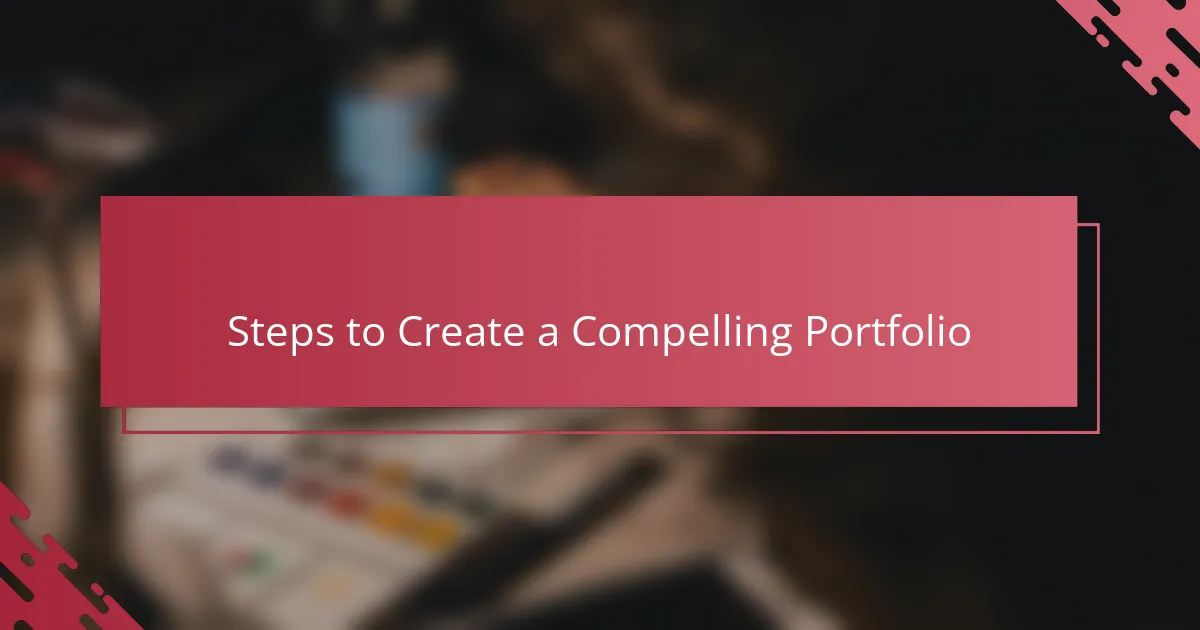
Steps to Create a Compelling Portfolio
Choosing the right pieces for your portfolio feels like telling a story that truly represents your skills and style. Have you ever sifted through your work and found that one illustration that just clicks? That’s the magic moment when your portfolio starts to come alive, showing not only what you can do but also who you are as an artist.
Organizing your portfolio is another crucial step. I learned early on that having a clear flow—whether it’s chronological or thematic—helps viewers follow the creative journey effortlessly. When I arranged my portfolio to lead from rough sketches to polished final works, clients seemed more engaged, almost like they were part of the process alongside me.
And what about the context behind your illustrations? I always include brief notes or stories that reveal why I chose certain styles or colors. It’s amazing how these little insights invite people to connect emotionally. Have you noticed how understanding the “why” behind an image changes the way you appreciate it? That’s exactly the effect you want your portfolio to have.
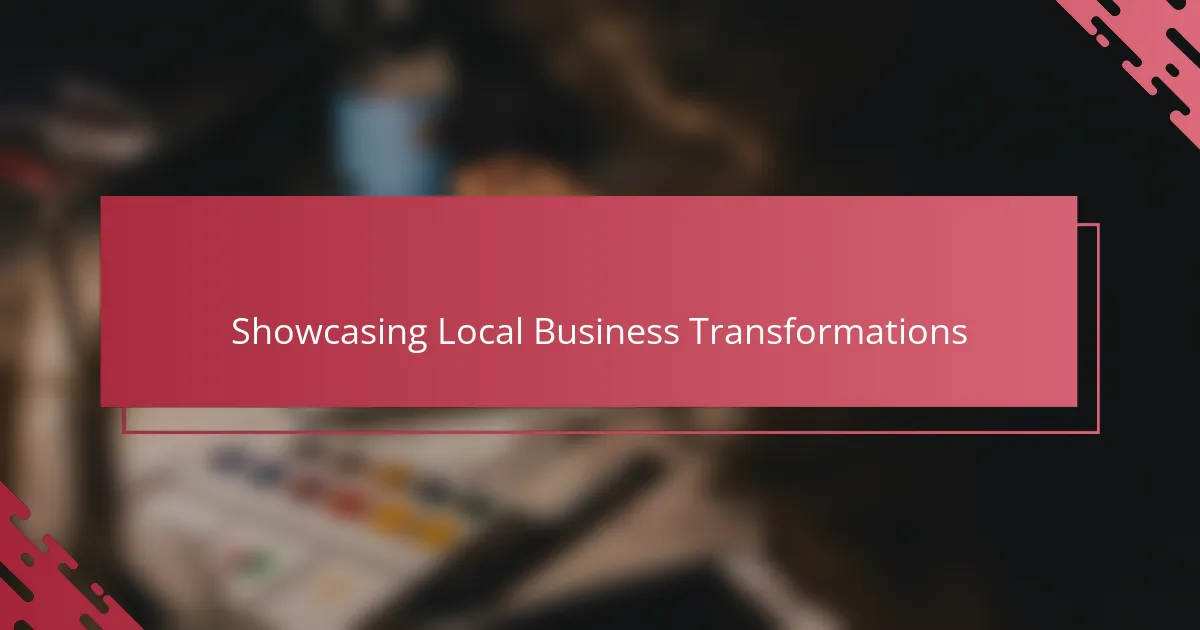
Showcasing Local Business Transformations
When I reflect on showcasing local business transformations through my illustrations, I realize it’s more than just updating logos or designing pretty pictures. It’s about capturing the evolution of a brand’s identity and making that change visible in a way that feels authentic and relatable. Have you ever seen a business go from ordinary to memorable just because the visuals finally matched its true personality? That’s the kind of transformation I strive to create.
One project that stands out in my mind involved a family-run bakery struggling to connect with younger customers. Through a series of hand-drawn illustrations, I highlighted their heritage and warmth while giving the branding a fresh, inviting look. Watching the community respond positively to this change reminded me that illustration isn’t just art; it’s a powerful tool for revitalizing local brands and deepening emotional ties.
What I find most rewarding is how these transformations breathe new life into businesses. It’s like witnessing a story unfold visually—where each sketch and color choice signals growth, trust, and renewed energy. When a local shop’s walls and marketing materials start to reflect who they really are, I know my work has helped build something lasting within that community.
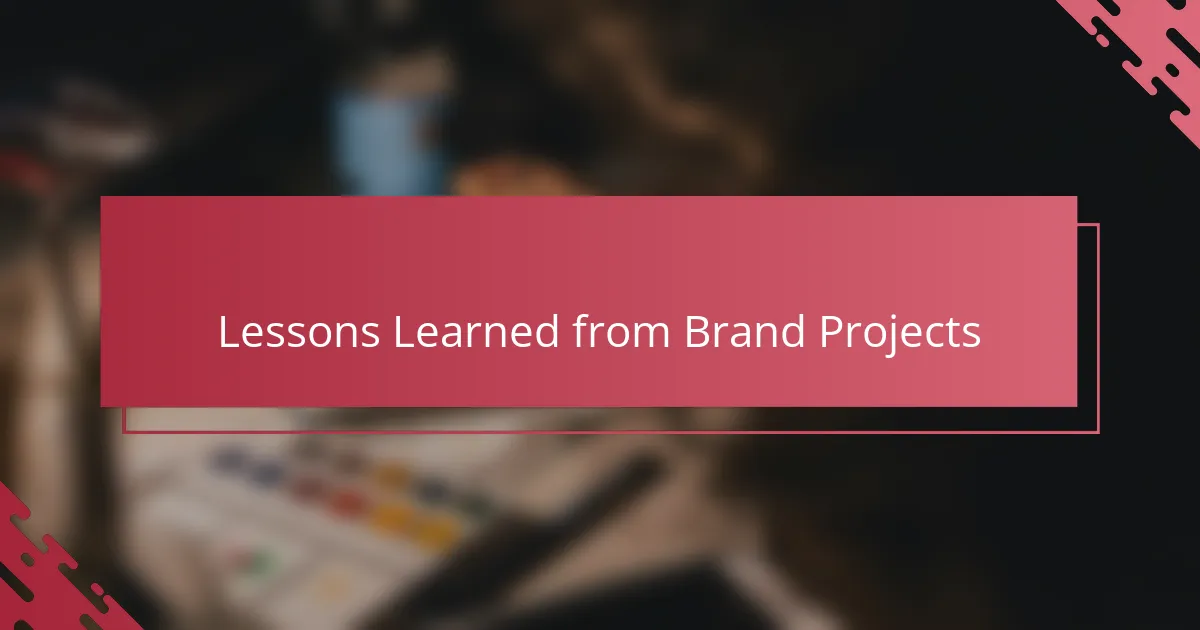
Lessons Learned from Brand Projects
One lesson that consistently surfaces from my brand projects is the importance of truly listening to the business owner’s story. Have you ever tried to capture a brand’s soul without understanding its core values? I have, and it’s almost impossible. When I take the time to connect deeply, the illustrations start to feel genuine, and the brand’s personality shines through naturally.
I’ve also learned that flexibility is key. Not every project follows the same path, and being open to feedback—even when it means reworking an entire concept—can be challenging but ultimately rewarding. There was a time when a local bookstore owner challenged my initial designs, pushing me to explore new directions. That collaboration ended up creating visuals that were far more authentic and effective than my original vision.
Finally, patience is something I’ve come to appreciate. Brand transformation is rarely instantaneous. What I’ve seen in my experience is that subtle visual changes build momentum over time, fostering trust and recognition within the community. Isn’t it fascinating how a gradual evolution in imagery can create lasting connections that a sudden overhaul might miss? This steady approach often results in brands that feel both fresh and comfortably familiar to their audience.
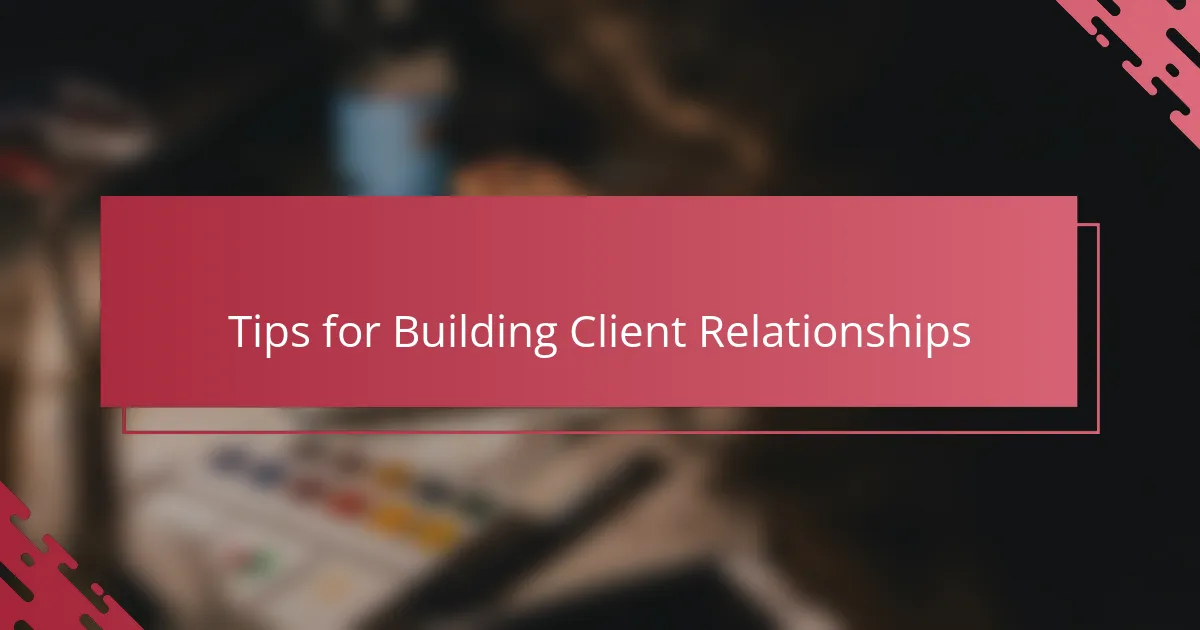
Tips for Building Client Relationships
Building strong client relationships starts with genuine communication. I’ve found that taking the time to listen—really listen—to what a business owner values creates a foundation of trust. Have you ever noticed how a simple conversation can open up creative possibilities you hadn’t considered before?
Transparency is another cornerstone. I make it a point to share my creative process openly, inviting clients to engage and give feedback. This collaborative approach not only refines the final product but also turns the project into a shared journey, strengthening our professional bond.
Lastly, I believe showing appreciation goes a long way. Sending a personalized thank-you note or checking in after a project wraps reminds clients they’re more than just business—they’re partners. Isn’t it amazing how small gestures can nurture long-lasting connections that lead to future collaborations?
